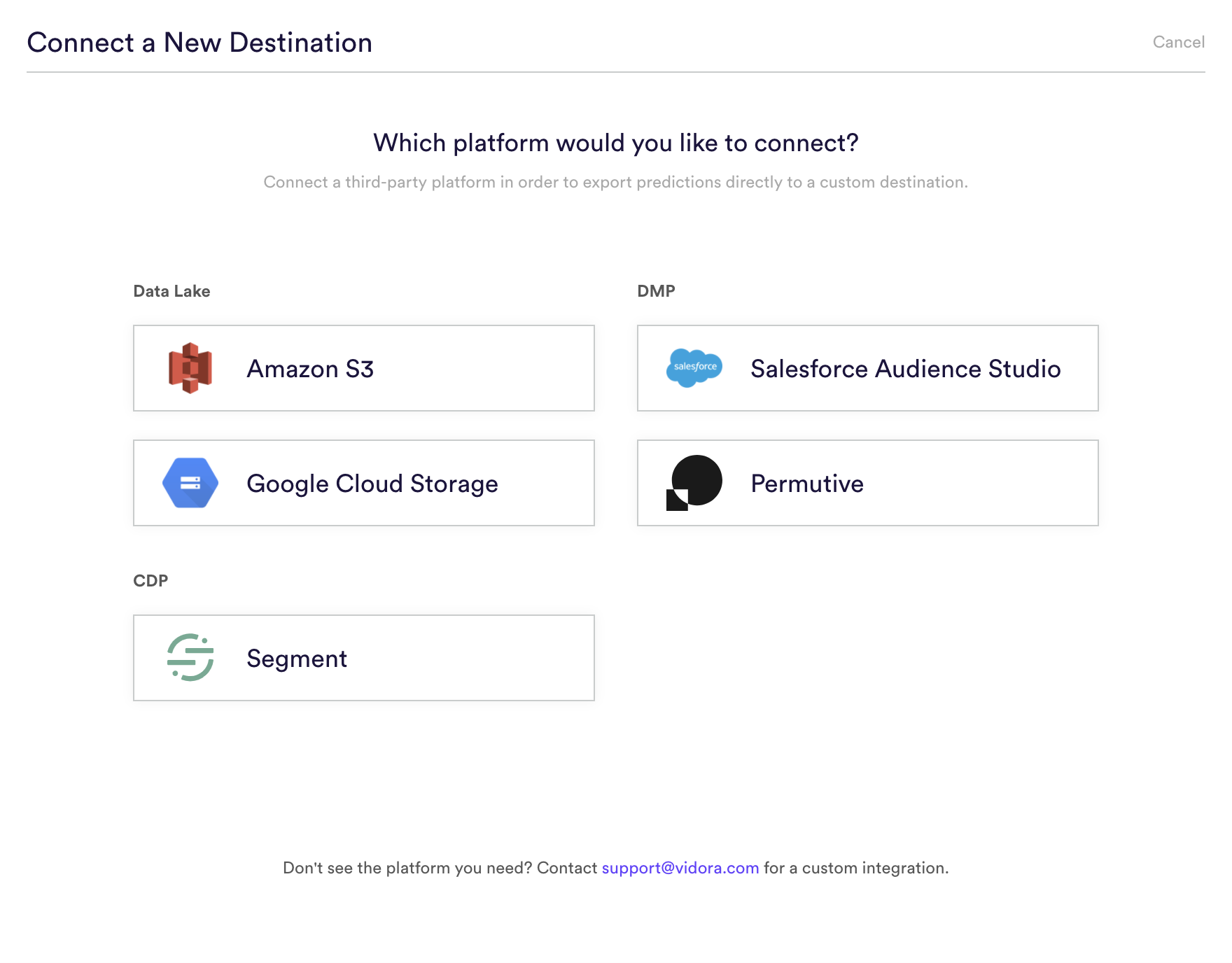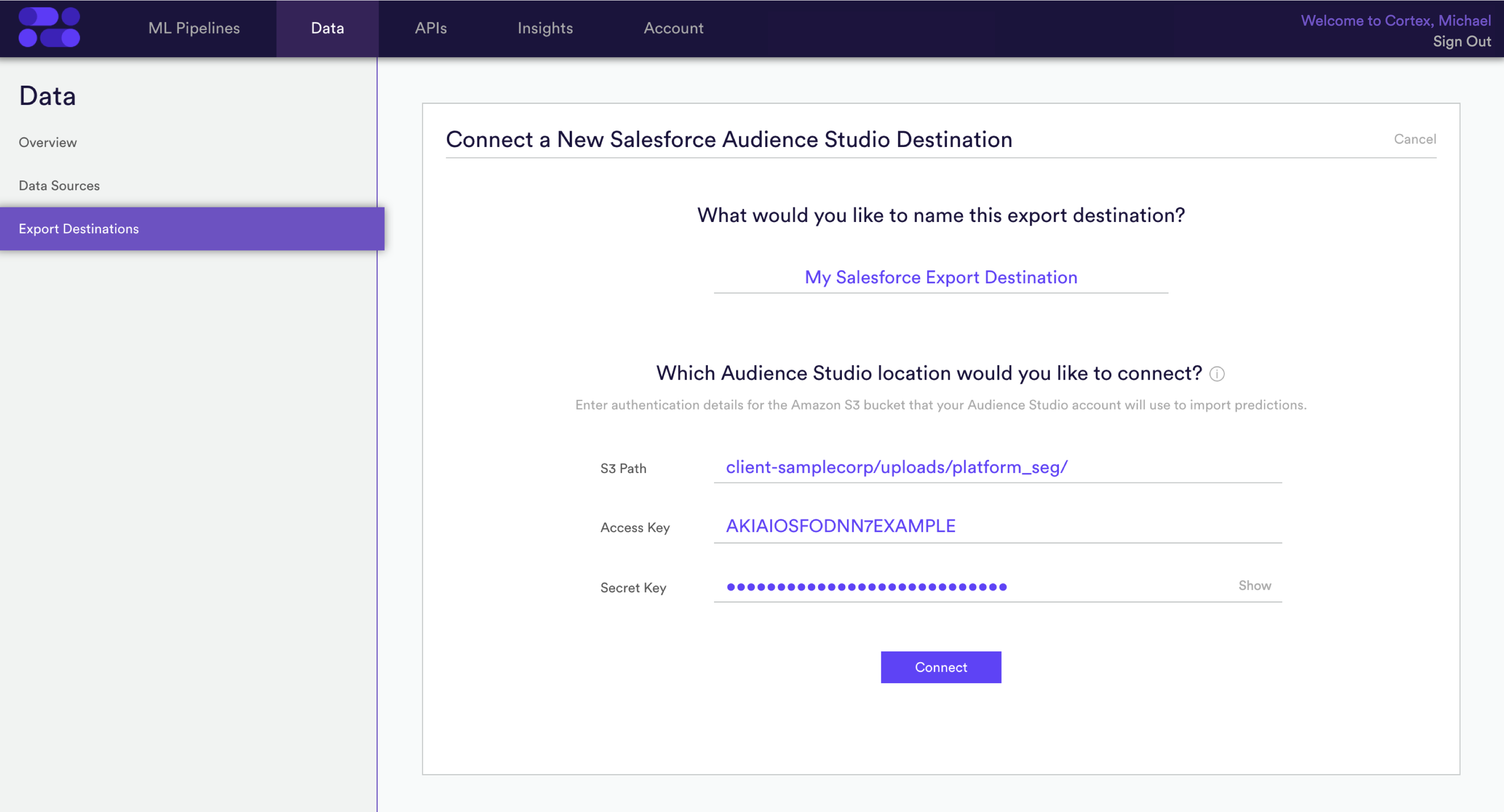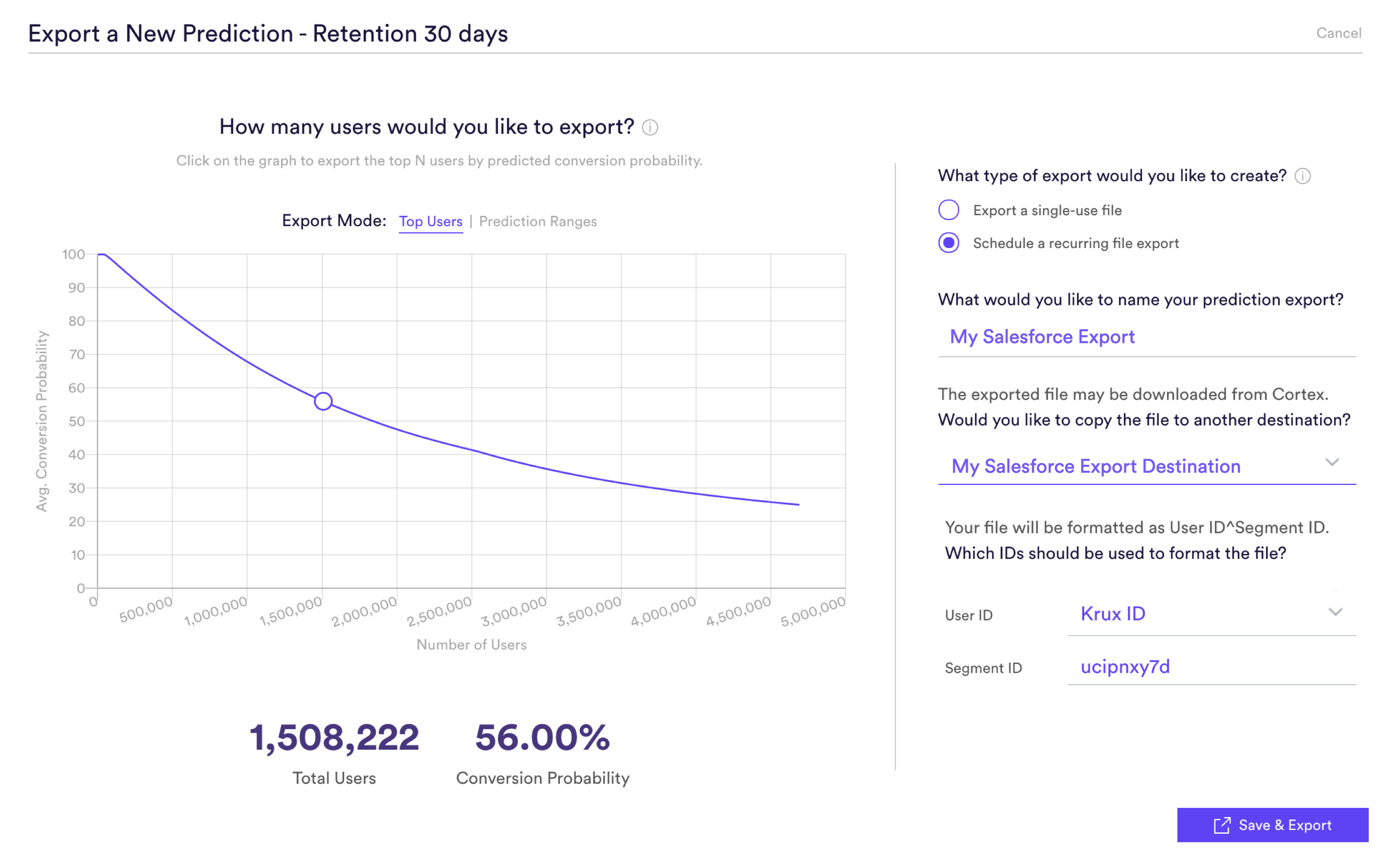How Can We Help?
Salesforce Audience Studio (Krux)
Once you’ve created a Machine Learning Pipeline, Cortex makes it easy to integrate the predictions into various third-party platforms, including Salesforce Audience Studio.
An integration with Salesforce allows you to deliver predictions from any Cortex pipeline directly into your Audience Studio account. This lets you combine the predictive power of Cortex with Salesforce’s personalized marketing tools, enabling you to automate customer outreach in an intelligent way.
In this guide, we’ll walk through how to set up an Audience Studio connection in Cortex, and discuss the functionality that this integration unlocks within your Cortex account.
Connecting a Salesforce Export Destination
A Cortex Export Destination sets up an integration between your Cortex account and a third-party platform. Once the connection is live, you may export predictions from Cortex directly to this custom destination.
To connect your Cortex account to Salesforce Audience Studio, create an Export Destination by following the steps below.
Step 1: Select Platform
First navigate to the Export Destinations area of the Data tab in Cortex, and select the “Salesforce Audience Studio” icon from the list of available platforms.

Step 2: Name Your Export Destination
Provide a name for your Export Destination so that you can reference it later when exporting predictions from a pipeline.
Step 3: Enter Access Credentials
Salesforce provisions an Amazon S3 bucket for every Audience Studio account. The next step in connecting your Export Destination is to specify access credentials so Cortex can upload predictions into this bucket. From there, your predictions will be automatically imported into Audience Studio as platform segments.
Your S3 path should resemble the below template, with your own Audience Studio information substituted for the NAME and FOLDER-NAMES placeholders.
S3 Path Template: s3://krux-partners/client-NAME/FOLDER-NAMES/ Example S3 Path: s3://krux-partners/client-samplecorp/uploads/platform_seg/
If you’re not sure how to find your Audience Studio S3 credentials, read this guide for more information.

Step 4: Activate the Connection
Once you’ve entered your S3 bucket and access credentials, hit “Connect” to activate the integration. Cortex will automatically test whether the connection is valid before creating the Export Destination.
Exporting Predictions to this Destination
Once your Export Destination has been connected, predictions from any Machine Learning Pipeline may be exported directly into Salesforce. To do this, create a Prediction Export and specify that results should be copied to your Salesforce Export Destination. Once this option is selected, supply the IDs that will be used to format the file according to Salesforce’s requirements:
- User ID: which ID column does Audience Studio recognize?
- Segment ID: what is the unique ID for the segment in Audience Studio?

Your predictions will be delivered to this S3 path in a sub-folder named using the upload date (YYYY-MM-DD), while the file itself will be named using the Prediction Export ID. You may use the Pipelines API to match this IDs to its corresponding Prediction Export in Cortex.
Upload Template:
<S3 Path>/<Upload Date>/vidora_export_<Prediction Export ID>.csv.gz
The below example shows the final location of a predictions file uploaded on July 1st, 2020. The predictions file uploaded to this location will always contain results from the most recent export.
Example Upload:
s3://krux-partners/client-samplecorp/uploads/platform_seg/2020-07-01/vidora_export_de1dfd9cb30c4e20.csv.gz
Related Links
Still have questions? Reach out to support@mparticle.com for more info!